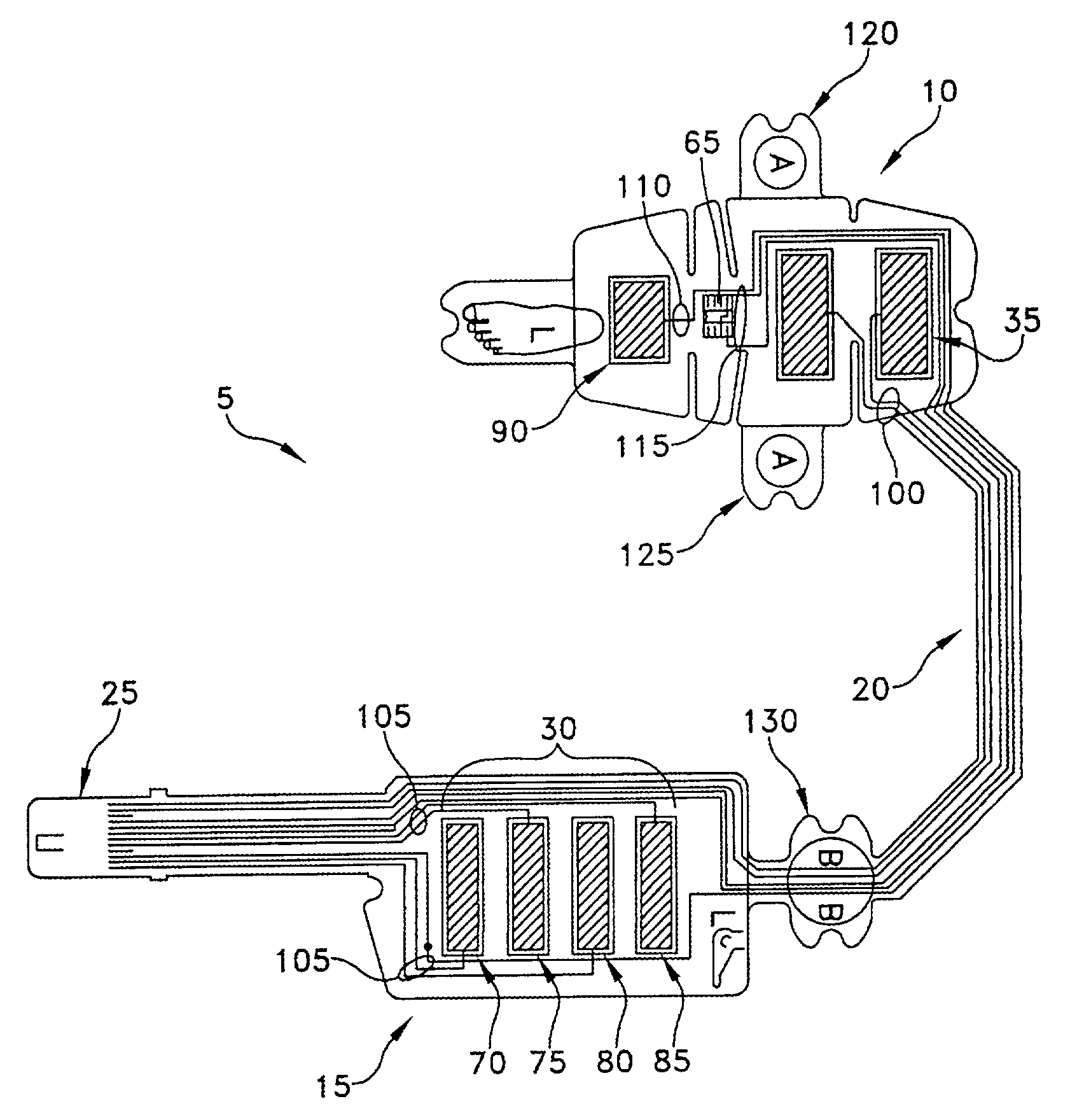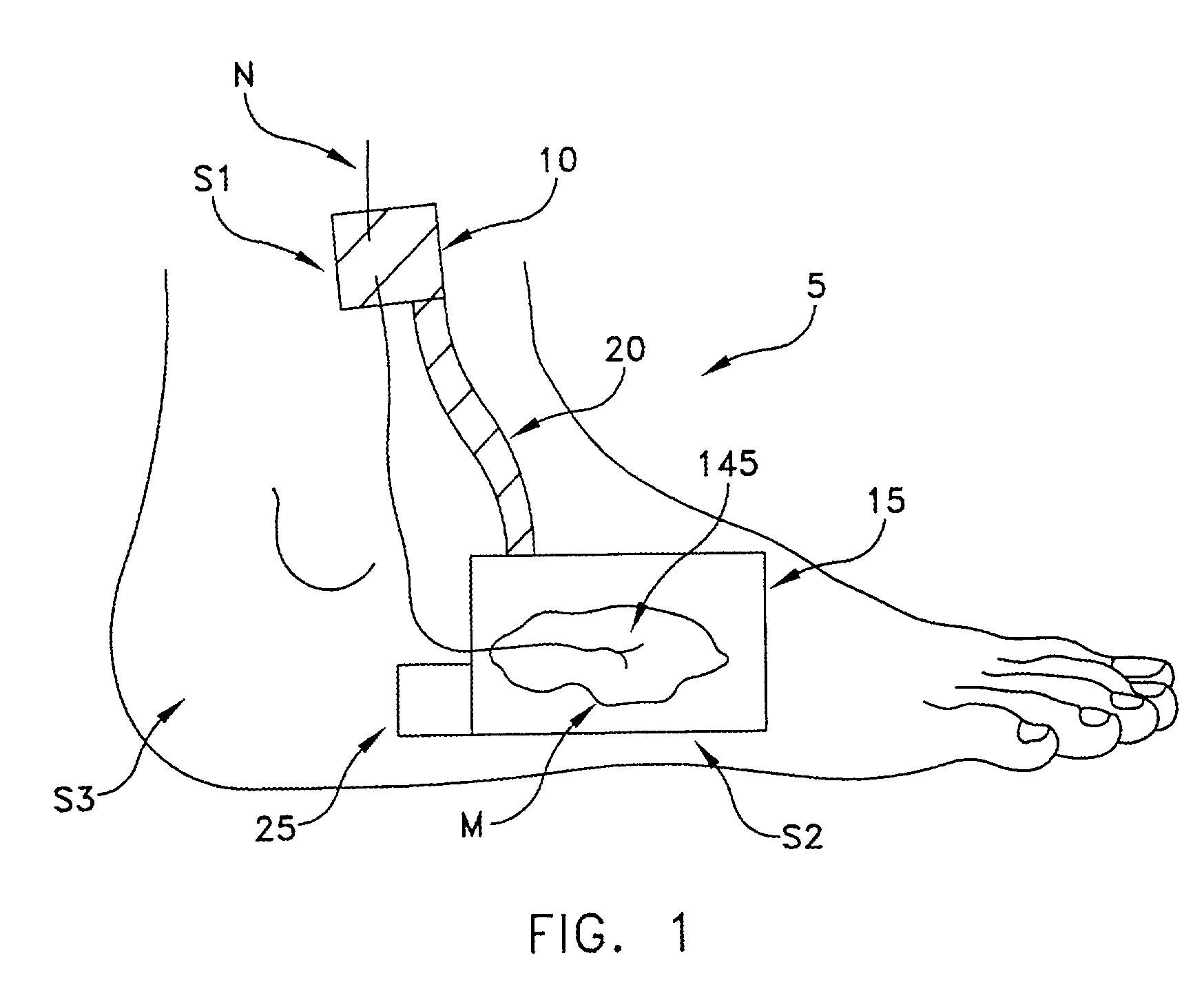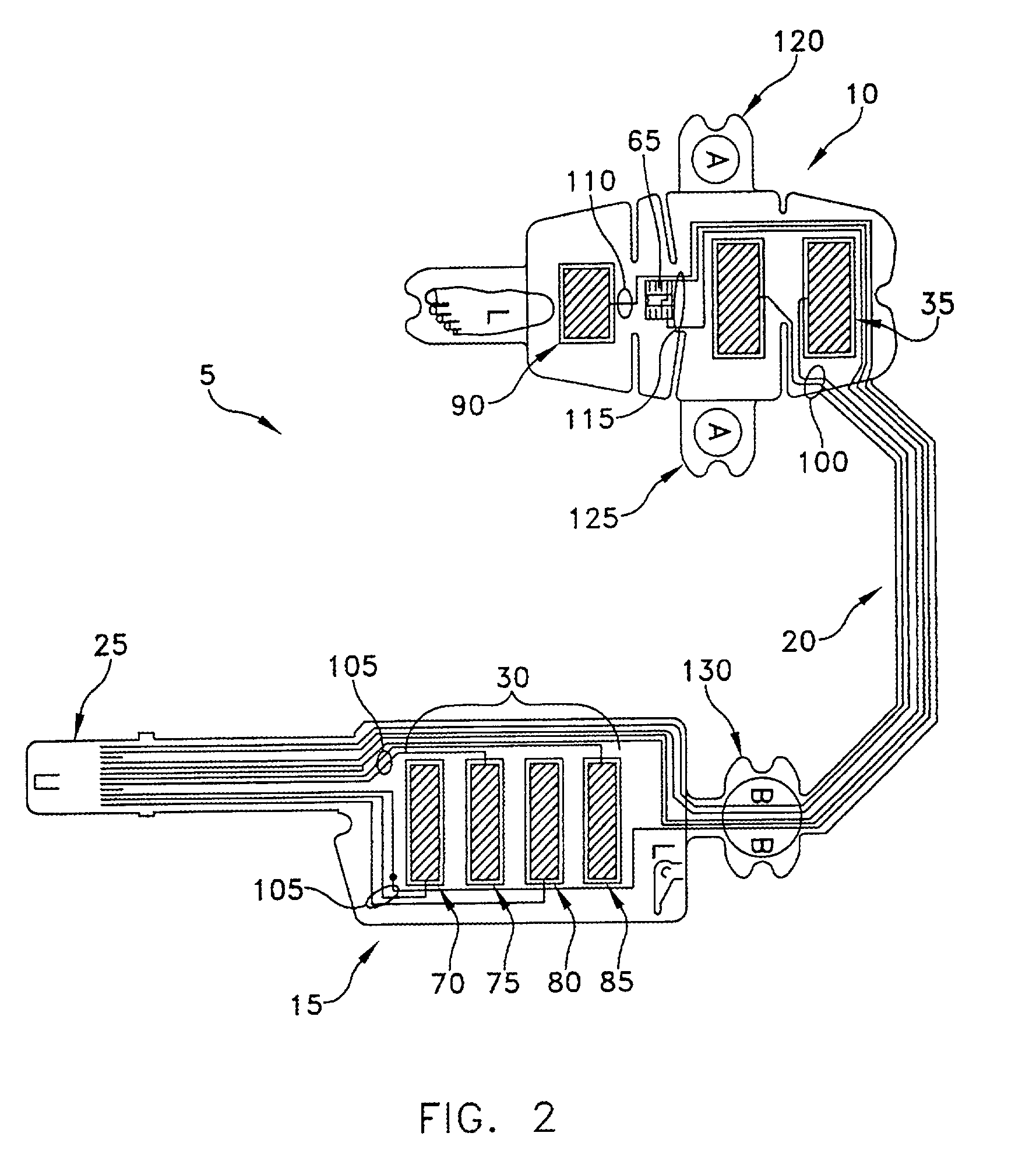Apparatus and method for performing nerve conduction studies with localization of evoked responses
a nerve conduction and nerve technology, applied in the field of apparatus and methods for the can solve the problems of wasting time, affecting the accuracy of neuromuscular function, so as to achieve automatic, rapid, and efficient assessment of neuromuscular function. the effect of symptom alon
- Summary
- Abstract
- Description
- Claims
- Application Information
AI Technical Summary
Benefits of technology
Problems solved by technology
Method used
Image
Examples
Embodiment Construction
[0026]A primary objective of the present invention is to measure evoked potentials in peripheral nerves and muscles. The process of acquiring such measurements is commonly described as a nerve conduction study. Typical nerve conduction measurements include nerve impulse propagation latency (distal motor latency, DML, or distal sensory latency, DSL), nerve impulse velocity (conduction velocity, CV), the amplitude of the evoked neural signal (nerve action potential, NAP, amplitude), and the amplitude of the neurally evoked muscle signal (compound muscle action potential, CMAP, amplitude).
[0027]The present invention includes a nerve conduction sensor and associated algorithms. Taken together, the invention provides mechanical and electronic localization to perform accurate and reliable nerve conduction studies. Mechanical localization is a process whereby mechanical means facilitate the placement of an evoked response detector in the general vicinity of the nerve segment or muscle to b...
PUM
 Login to View More
Login to View More Abstract
Description
Claims
Application Information
 Login to View More
Login to View More - R&D
- Intellectual Property
- Life Sciences
- Materials
- Tech Scout
- Unparalleled Data Quality
- Higher Quality Content
- 60% Fewer Hallucinations
Browse by: Latest US Patents, China's latest patents, Technical Efficacy Thesaurus, Application Domain, Technology Topic, Popular Technical Reports.
© 2025 PatSnap. All rights reserved.Legal|Privacy policy|Modern Slavery Act Transparency Statement|Sitemap|About US| Contact US: help@patsnap.com



